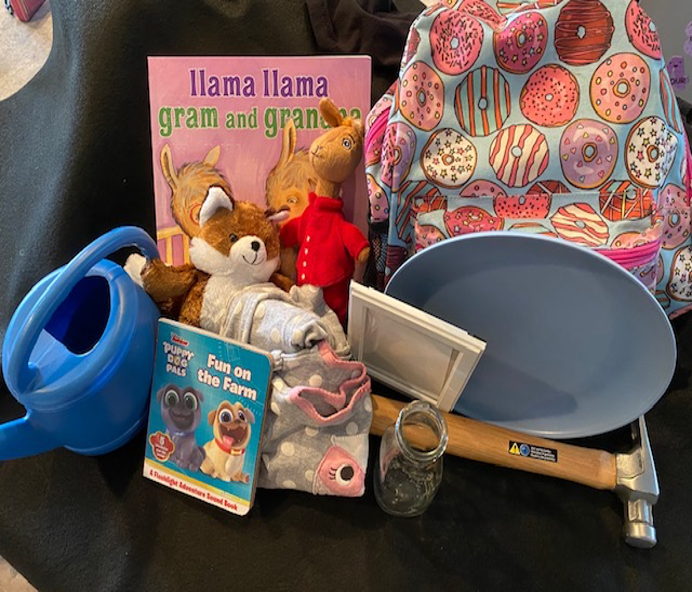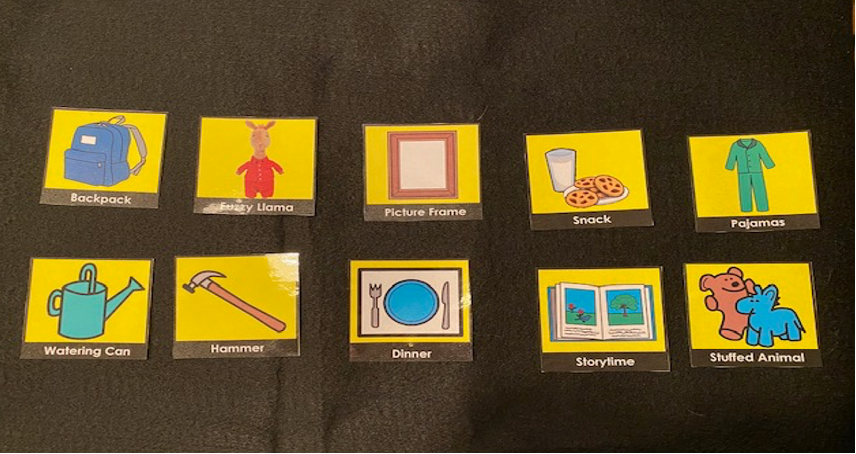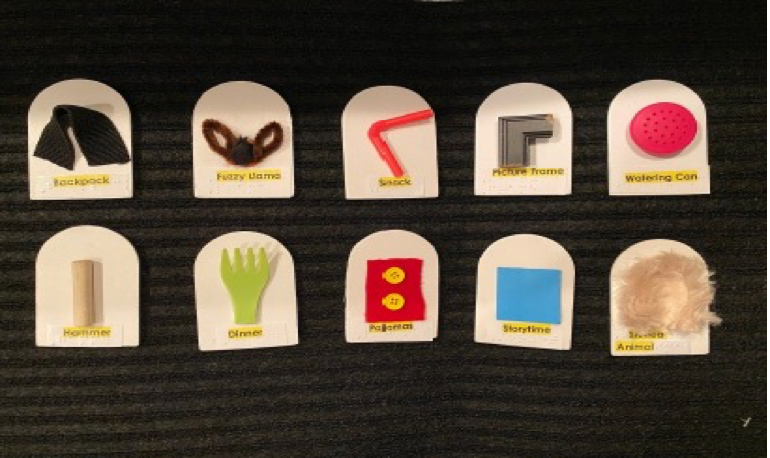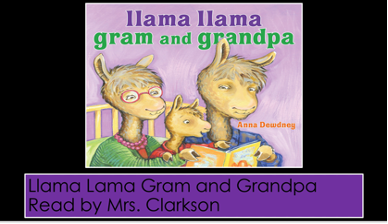Making "Llama Llama Gram and Grandpa" Accessible to Students with Multiple Disabilities

As part of the graduate coursework for Visual Impairments and Multiple Disabilities in the Teacher Preparation Program in Visual Impairments at the University of Kentucky, students were asked to complete four projects: a Story Box with at least 10 objects that correspond to the story, picture communication symbols and tactile communication symbols designed to go along with the story, and a talking book to go along with the story or represent concepts from the story.
We are sharing them on Paths to Literacy and hope that others will use them!
Llama Llama Gram and Grandpa by Anna Dewdney discusses one of children's most beloved and special experiences: staying with their grandparents. It explores different emotions and is easily relatable to children. The book's simple pictures and bright colors make it easy for children with visual impairments and multiple disabilities to understand, focus and follow along.
Story Box
Llama Llama Gram and Grandpa works well as a story box because it presents many opportunities to introduce real tangible objects in relation to the story. Using real objects, both new and familiar allows children to further explore and understand those objects, their function, apply meaning to them, and begin to build their knowledge about relating concepts.
I used the following objects for the story box:
- A backpack- llama packs his bag to get ready for his overnight visit, also serves as storage for the book and the story box items.
- Fuzzy llama- Small stuffed llama to show llama's favorite toy.
- A milk glass- Represents snack time: milk and cookies
- Picture frame- llama sees pictures of his mom.
- Pajamas- toddler sized pajamas to indicate bedtime
- Watering can- llama plays outside and helps grandma in the garden
- Hammer- llama helps grandpa in his workshop
- Plate- Dinner time: llama helps carry the dishes to the table.
- Book- Story before bedtime
- Stuffed animal- Grandpas loved stuffed animal he gives to little llama.
Procedure:
- Introduce items as they are mentioned in the book, allow child ample time to explore.
- Use objects to discuss meaning in the story.
- Use items to sequence events in the story or answer questions.
- Items could be used at a future session to further develop concepts of objects and functionality. Have child pack backpack and use tactual discrimination skills to pull requested item from backpack without looking.
- Explore salient features of objects.
- Discuss how the child feels about spending the night with their grandparents.
- What are their favorite things to do there?
- Count items used.
- Have child anticipate/predict what object will be used next.
Picture Symbols
I created picture symbols for the same story for my students with low vision and CVI. These picture symbols were created with Boardmaker and then laminated for durability. I tried to use pictures very similar to the objects used in the story box. Each picture symbol includes a high contrast yellow background, simple pictures and large print.
Here are the pictures I used:
- Backpack
- Fuzzy llama
- Picture frame
- Milk and cookies
- Pajamas
- Watering can
- Hammer
- Plate and utensils
- Book
- Stuffed animal

Procedure:
I plan to use these pictures symbols as a way to work on sequencing with my students and as a way to build sentences and answer questions relating to the story. For example, what did llama leave at home that made him sad during the story, or what did they do in the story after they went outside. I will also use the symbols as a way for my student to match and relate these pictures to their real objects.
Tactual Symbols
For tactual symbols I tried to think about the object's most defining feature tactually. Each symbol has a large print and braille label. Below are the symbols I ended up creating. I would recommend building child's knowledge and understanding of these symbols by exploring the whole object when appropriate and then introducing these symbols and giving them time and background knowledge needed to make that connection between the tactual representation and actual object. After giving child time to understand the symbol in relation to the actual object, you may want to troubleshoot any misconceptions or misunderstandings and work through them or make changes to the symbols as needed.
- Fuzzy llama- Brown pipe cleaner molded into the shape of llama ears. I placed fake fur between the ears to mimic the feel and look of the llama used before.
- Backpack- For the backpack I used the top hook of the backpack.
- Snack- I cut the top part of the straw and used it.
- Picture Frame- I cut the corner of the picture frame for this item. I wanted to use the corner because most picture frames have four corners and carry the shape of a square or rectangle. If I just used a middle piece it could be more vaguely interpreted.
- Watering Can- I used the spout or top of the watering can where the water comes out.
- Hammer- I had a hard time with finding an actual part or something that easily represented a hammer. I ended using a wooden dowel since the hammer typically has a wooden handle.
- Dinner- For dinner I used to top of a kids plastic fork. Since I had both snack and dinner time in my story, I needed to differentiate between these meal times. I feel snack time is typically more finger foods and where dinner is more formal where you would use utensils and snack time you might not.
- Pajamas- I used a square of red felt and placed two yellow buttons on top. This reminded me of flannel button down pajamas which is a very traditional pajama type. It is also what is pictured in our story.
- Storytime- For story time, I cut part of a post it note stack and turned it so that you could feel several pages and flip through them like a book.
- Stuffed animal- I cut the middle of the paw from a stuffed teddy bear and around it so it could feel the soft part of the paw as well as the fluffy hair around it.
Procedure:
- Allow students to explore tactual symbols, making predictions about what they are or how they will be used in the story.
- Have students anticipate what symbol will come next.
- Have child sequence symbols as they occur in the story
- Have child compare and contrast these symbols against real objects.
- Use symbols to answer questions and show their understanding.

Talking Book
For my talking book I chose high contrast backgrounds with simple pictures. The pages feature large print. The audio includes the entire book, while I only included a portion of the book in print on each page to keep from adding visual clutter. I did use some of the same simple pictures used in my picture symbols. I added some music and sound effects to make it more interactive. Each page offers movement with transitions of each page.

